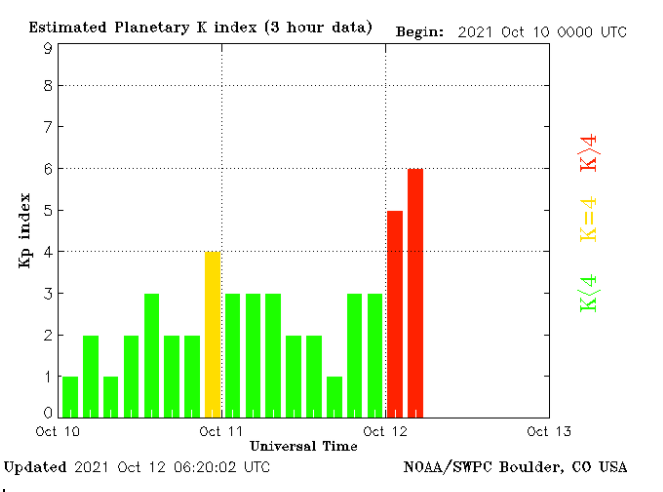
13 Oct G2 K6 Solar Storm Hits Earth

12/10/2021
MEDIA ALERT
FOR IMMEDIATE RELEASE
An eruption on the Sun a few days ago (9 October 2021) produced a Coronal Mass Ejection (CME) that is now showing its effects on the Earth’s magnetic field. Magnetometer readings around the world are showing moderate disruptions. A disturbance of this size is a G2 storm on the NOAA scale. NOAA is the National Oceanic and Atmospheric Administration and their headquarters are located in Boulder, Colorado, USA.
The NOAA scale goes from 1 (minor) to 5 (extreme). A G2 storm can disrupt communication with spacecraft and require updates to satellite position calculations from increased drag. At high latitudes (above 55 degrees), High Frequency radio communication with aircraft can be impacted. South Africa is at 35 degrees latitude, so the forecast for local radio disruption and power systems impact is minimal.
The SANSA Space Weather Centre is continuously monitoring solar activity and providing alerts on impacts that affect our nation’s technology and operations.
The K-index is a measurement of the disturbance of the magnetic field relative to a quiet day. An undisturbed day will have a K of zero, while the largest known disturbance for a given location will have a K of 9. Values of K less than four are ordinary wiggles in the Earth’s magnetic field. Values higher than 4 indicate storms of increasing strength.
At the storm’s peak Earth experienced a planetary K-index of six, while SANSA in Hermanus observed a slightly lesser K-index disturbance of five.
The local geomagnetic disturbance was at G1 storm level based on Hermanus data, but globally a G2 storm was observed.
If you are an amateur HF communications hobbyist, please send your feedback on HF disturbances to spacesci-info@sansa.org.za
For any further queries please contact SANSA Communications at:
028 285 0000
dfouche@sansa.org.za or rdaniels@sansa.org.za



